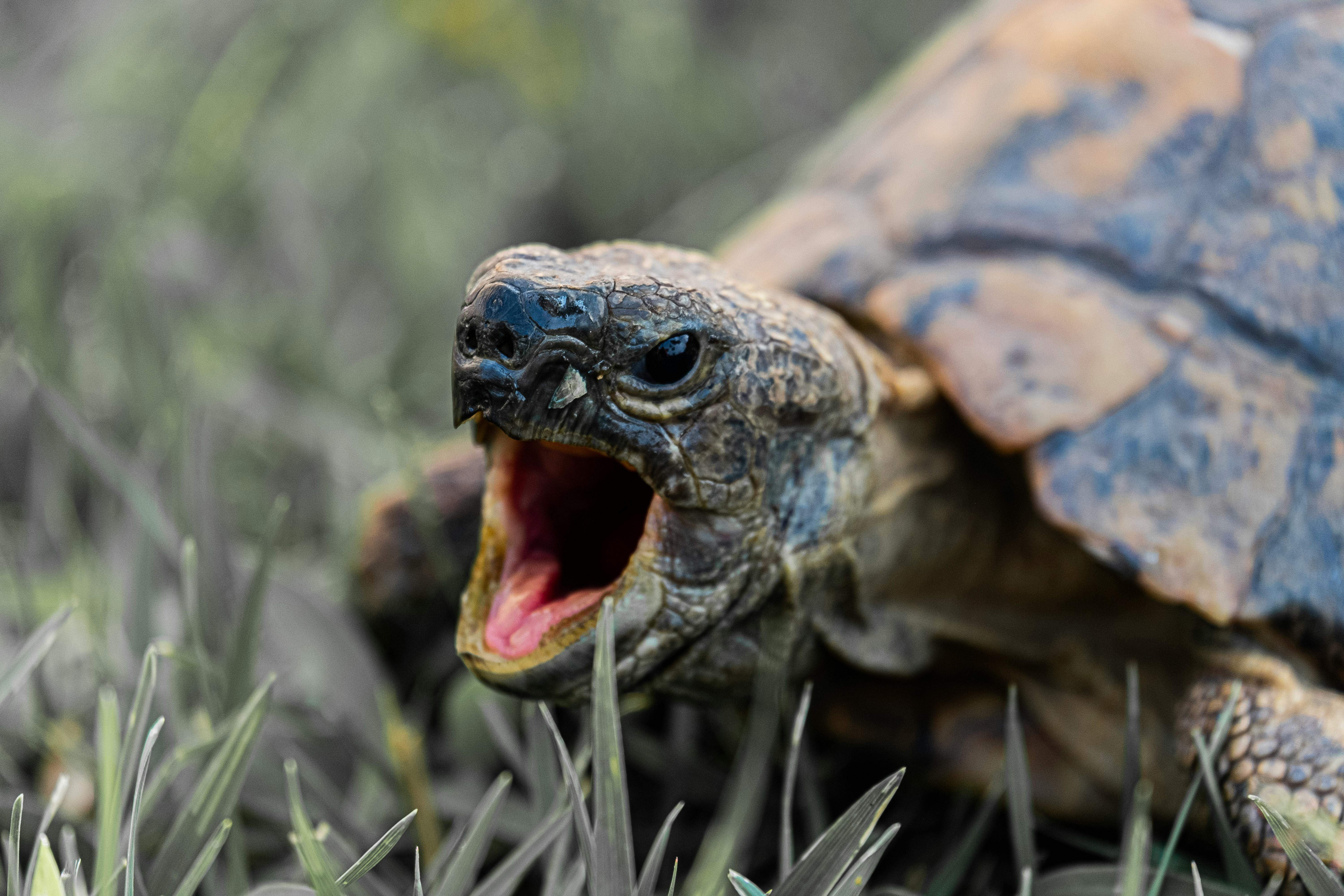What Does The Inside Of A Turtle’s Mouth Look Like
Turtles are fascinating creatures that have captured the curiosity of humans for centuries. From their unique shells to their slow and steady movements, turtles have a charm that is hard to resist. One aspect of turtles that often goes unnoticed is the inside of their mouths. In this article, we will explore what the inside of a turtle’s mouth looks like, shedding light on this lesser-known aspect of these remarkable reptiles.
The Anatomy of a Turtle’s Mouth
A turtle’s mouth is a complex structure designed to suit its specific dietary needs. While the exact appearance may vary slightly depending on the species, there are some common features that can be observed.
1. Beak-like Structure: Turtles have a beak-like structure instead of teeth. This beak is made of keratin, the same material found in our fingernails and hair. The shape and size of the beak can vary depending on the turtle’s diet. Herbivorous turtles have broad, flat beaks for chewing vegetation, while carnivorous turtles have sharp, pointed beaks for capturing and tearing prey.
2. No Tongue: Unlike humans and many other animals, turtles do not have tongues. Instead, they have a muscular structure called the hyoid apparatus that helps them manipulate food within their mouths.
3. Papillae: The inside of a turtle’s mouth is lined with small, fleshy projections called papillae. These papillae aid in gripping and swallowing food. They can vary in size and shape depending on the turtle’s diet and feeding habits.
Adaptations for Different Diets
Turtles have evolved to occupy a wide range of ecological niches, resulting in various dietary preferences. Let’s explore how the inside of a turtle’s mouth adapts to different diets:
Herbivorous Turtles
Herbivorous turtles, such as the green sea turtle and the tortoise, have mouths adapted for consuming plant matter. Their beaks are broad and flat, allowing them to chew and grind vegetation effectively. The papillae in their mouths are often larger and more numerous, aiding in the breakdown and digestion of plant material.
Carnivorous Turtles
Carnivorous turtles, like snapping turtles and softshell turtles, have mouths designed for capturing and consuming prey. Their beaks are sharp and pointed, enabling them to tear flesh and crush shells. The papillae in their mouths are smaller and fewer in number, as they primarily rely on their beaks for feeding.
Omnivorous Turtles
Some turtles, such as the red-eared slider and the painted turtle, have omnivorous diets. Their mouths exhibit a combination of adaptations seen in herbivorous and carnivorous turtles. Their beaks are not as broad as those of herbivorous turtles, but they are not as sharp as those of carnivorous turtles either. The papillae in their mouths are of intermediate size and number, allowing them to consume both plant and animal matter.
Frequently Asked Questions (FAQ)
1. Can turtles bite?
Yes, turtles can bite. While their beaks are not as sharp as those of some other animals, they can still deliver a powerful bite. It is important to handle turtles with care and respect their personal space to avoid getting bitten.
2. Do turtles have teeth?
No, turtles do not have teeth. Instead, they have a beak-like structure made of keratin. This beak is used for biting, tearing, and grinding food, depending on the turtle’s diet.
3. How do turtles chew their food without teeth?
Turtles use their beaks and the muscles in their mouths to break down food. Herbivorous turtles have broad, flat beaks that allow them to chew vegetation effectively. Carnivorous turtles rely more on tearing and swallowing their prey whole.
4. Can turtles swallow large prey?
Yes, turtles can swallow relatively large prey, especially those with more flexible necks like snapping turtles. They have a unique ability to stretch their throats to accommodate larger food items.
5. Are there any dangers associated with a turtle’s mouth?
While a turtle’s mouth itself is not inherently dangerous, it is important to be cautious when handling turtles. Some turtles may carry bacteria, such as Salmonella, which can be harmful to humans. It is advisable to wash your hands thoroughly after handling turtles or their habitats.
6. Can turtles regrow their beaks?
No, turtles cannot regrow their beaks. The beak is made of keratin, which is not a living tissue. If a turtle’s beak gets damaged or broken, it will not grow back. Therefore, it is crucial to provide proper care and prevent any injuries to a turtle’s beak.
Summary
The inside of a turtle’s mouth is a fascinating aspect of their anatomy. From the beak-like structure to the presence of papillae, turtles have unique adaptations that suit their specific dietary needs. Whether they are herbivorous, carnivorous, or omnivorous, turtles have evolved to thrive in their respective ecological niches. Understanding the inside of a turtle’s mouth provides valuable insights into their feeding habits and overall biology. So, the next time you encounter a turtle, take a moment to appreciate the intricate design of its mouth and the wonders of nature.


